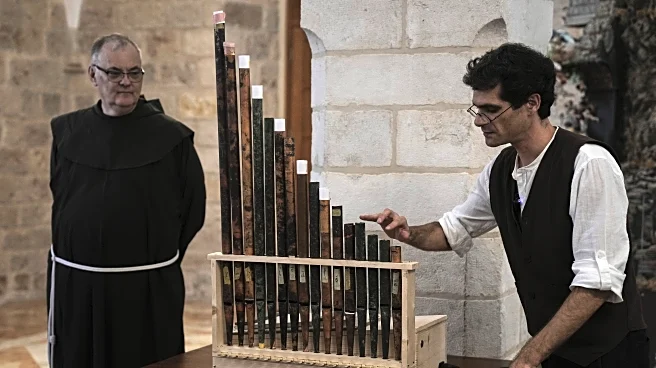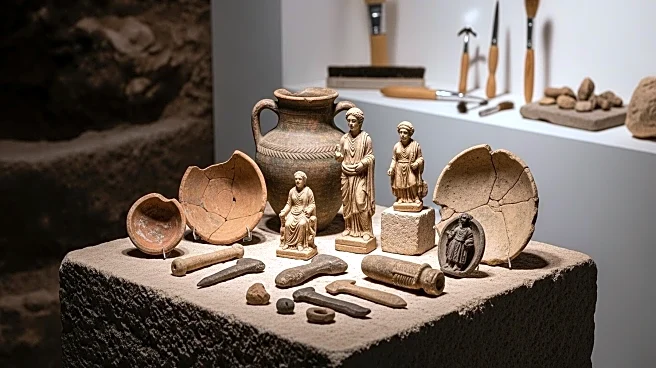What's Happening?
The Venus of Willendorf, a prehistoric statuette discovered in Austria in 1908, remains an archaeological enigma due to its unclear origins and purpose. The statuette, dating back 25,000 years, is part of a series of Venus figurines found across Europe. Recent research using micro-computed tomography scans suggests the limestone used to create the Venus of Willendorf may have originated from Northern Italy. The figurine's design has led to various theories about its role, ranging from religious symbolism to representations of fertility or health.
Why It's Important?
The Venus of Willendorf is a significant artifact in the study of prehistoric art and human history. Understanding its origins and purpose can provide insights into the cultural and social dynamics of early human societies. The ongoing research into the figurine's limestone composition highlights the importance of scientific methods in archaeology. The Venus of Willendorf's mystery continues to captivate historians and archaeologists, prompting discussions about the interpretation of ancient artifacts and their impact on our understanding of human development.
What's Next?
Further research into the Venus of Willendorf may involve advanced technologies and interdisciplinary approaches to uncover more details about its origins and significance. Archaeologists and historians will continue to explore the cultural context of Venus figurines, potentially leading to new theories and discoveries. The study of prehistoric art remains a dynamic field, with ongoing debates about the interpretation and meaning of ancient artifacts.
Beyond the Headlines
The Venus of Willendorf raises broader questions about the representation of women and body image in prehistoric societies. The figurine's design may reflect cultural values related to fertility, health, or beauty, offering insights into the social constructs of the time. The study of Venus figurines also highlights the challenges of interpreting ancient artifacts, where cultural biases and assumptions can influence our understanding. As researchers delve deeper into the mystery, they may uncover new perspectives on the role of art and symbolism in early human societies.














